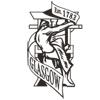
IF there was ever any hope that Christmas might deliver a last-minute gift of more customers for the high street, the latest figures show how misplaced the hope was. Across the board, footfall in the UK was dramatically down in December and was particularly bad in Scotland. Shopping centres, retail parks and the traditional high street all suffered a drop in customer numbers, which begs the question: if Christmas can’t save the high street, what can?
The most obvious reason for the latest figures is the continuing move to online shopping, although it is by no means the only one. Customers have been moving inexorably to the internet for years but this year we have also really begun to see the effect of better online delivery times. In previous years, anyone who left their Christmas shopping until the last minute had to go into town, but with many more 24-hour or same-day delivery options from digital retailers, that is no longer the case. It means another reason to physically shop instead of doing it online has largely disappeared.
However, it would be wrong to blame the internet entirely for the Christmas figures because there are a number of other factors at work, the first being the level of personal debt. In the UK, the mountain has now risen to over £1.5 trillion, which, for individuals, means less disposable income as they try to service their debts and, for the high street, means less money to spend in the shops. To make matters worse, the Brexit effect on inflation and stagnant pay are further tightening household budgets.
Obviously, all these factors could and do apply to internet spending too, but the bonus for digital retailers is that the pressure on household income means people are even more likely to shop around online for the cheapest option rather than head into town for a browse. It all makes for some pretty devastating consequences for the high street.
An added issue in Scotland – and this may explain why the Scottish high street experienced the sharpest reductions in footfall – is the state of our economy, which is lagging behind the UK’s. It is so bad that there remains a real risk of recession, but the immediate consequences are all those “to-let” signs on the high street. Business rates in Scotland, which have imposed a greater burden than in the rest of the UK, have also contributed to the problem.
So where is the road back for the high street? On the issue of business rates, the recent reforms introduced by the Scottish Government are a positive start, but retailers of all kinds will also have to accept the changing reality and ensure that the service they offer in their stores is as good as it can be.
The high street as a whole is also in need of a radical rethink, the problem being that much of it is still rooted in the old way of doing things: in other words, rows of big-name shops that can be found pretty much anywhere in the country.
Where there has been revival – in the Finnieston area of Glasgow for instance – the key has been innovation based on shopping, but eating and drinking and entertainment too. It is these things that provide reasons to go to the high street for people who otherwise do much of their shopping online.
However, a transformation of this kind will only come about with some profound changes to the way we deal with the high street. One of the reasons retail parks have proved relatively resilient is because parking is easy, so parking should be made easier and free in towns too. The planning laws should also be reformed so it is much easier and cheaper to put empty shops to other uses, including housing.
Many of the trends affecting the high street are irreversible and are part of a change in the way we live. But with some radical structural, economic and regulatory change, there is still hope for the future.



Why are you making commenting on The Herald only available to subscribers?
It should have been a safe space for informed debate, somewhere for readers to discuss issues around the biggest stories of the day, but all too often the below the line comments on most websites have become bogged down by off-topic discussions and abuse.
heraldscotland.com is tackling this problem by allowing only subscribers to comment.
We are doing this to improve the experience for our loyal readers and we believe it will reduce the ability of trolls and troublemakers, who occasionally find their way onto our site, to abuse our journalists and readers. We also hope it will help the comments section fulfil its promise as a part of Scotland's conversation with itself.
We are lucky at The Herald. We are read by an informed, educated readership who can add their knowledge and insights to our stories.
That is invaluable.
We are making the subscriber-only change to support our valued readers, who tell us they don't want the site cluttered up with irrelevant comments, untruths and abuse.
In the past, the journalist’s job was to collect and distribute information to the audience. Technology means that readers can shape a discussion. We look forward to hearing from you on heraldscotland.com
Comments & Moderation
Readers’ comments: You are personally liable for the content of any comments you upload to this website, so please act responsibly. We do not pre-moderate or monitor readers’ comments appearing on our websites, but we do post-moderate in response to complaints we receive or otherwise when a potential problem comes to our attention. You can make a complaint by using the ‘report this post’ link . We may then apply our discretion under the user terms to amend or delete comments.
Post moderation is undertaken full-time 9am-6pm on weekdays, and on a part-time basis outwith those hours.
Read the rules hereLast Updated:
Report this comment Cancel